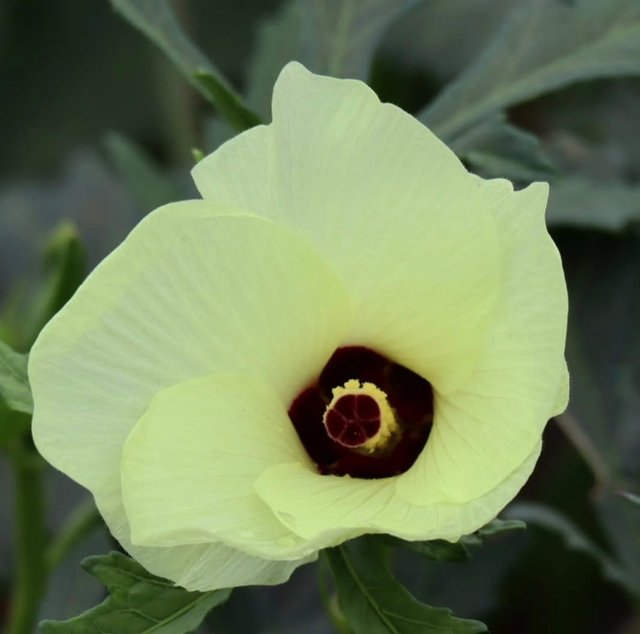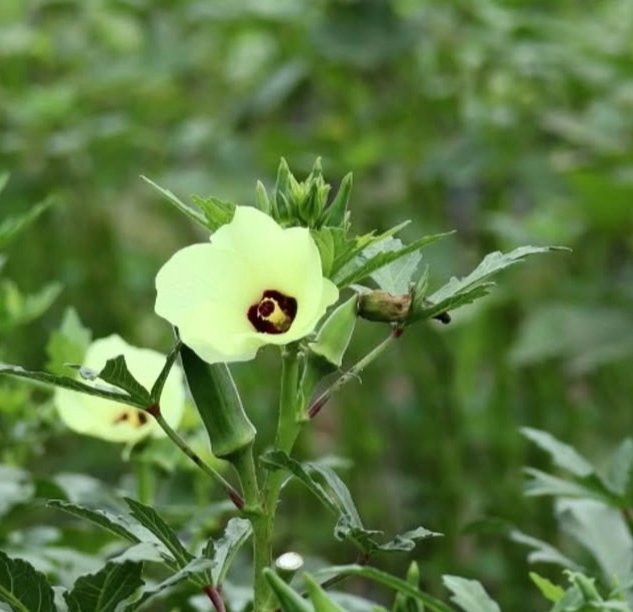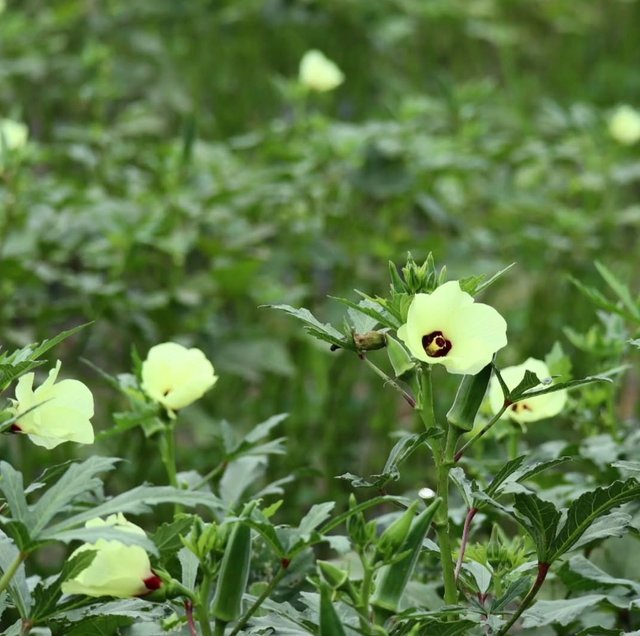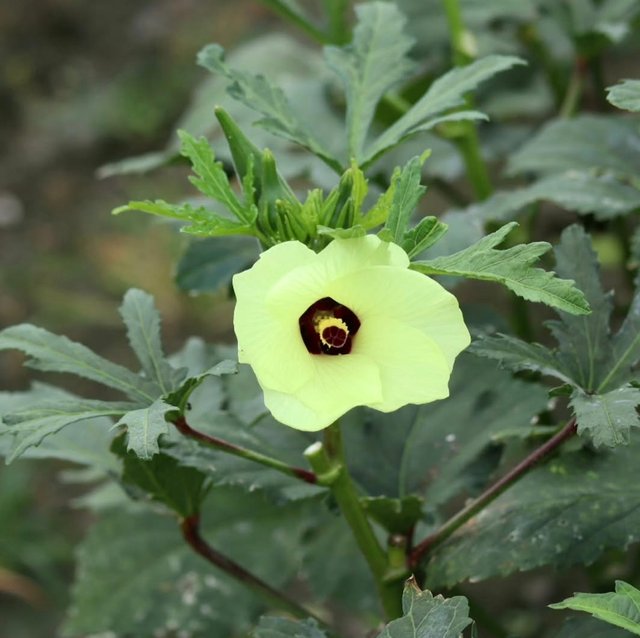Okra Flower
When we think of okra most of us picture its slender green pods, often sliced up for soups, stews, or fried into crispy treats. But before the pod comes a remarkable and often overlooked beauty — the okra flower.The okra flower is elegant and striking, bearing a resemblance to the hibiscus, to which it is closely related (both belong to the Malvaceae family). These blossoms are typically pale yellow or cream-colored, with a deep crimson or burgundy throat at the center. The contrast between the soft, delicate petals and the rich color of the inner eye gives the flower a truly captivating appearance.
Each flower blooms for just one day, making its presence fleeting yet unforgettable. Despite their short life span, okra plants produce a continuous stream of blossoms during the growing season, ensuring a steady yield of pods.Okra flowers attract bees and other pollinators, which are crucial for fertilization and fruit set. This makes okra a helpful companion in mixed gardens and small farms.A healthy flower signals a thriving plant. When the flowers open regularly and vibrantly, it's a sign that the plant is well-fed, watered, and in ideal conditions.In some cultures, particularly in parts of Africa and Asia, the flower itself is considered edible. It can be used in salads or as a garnish, much like squash blossoms. The flavor is subtle, and the petals are soft and slightly mucilaginous — similar to the okra pods.
The okra flower is more than a fleeting decoration. After pollination (often on the same day it blooms), the flower quickly withers and drops off, and in its place grows the okra pod. This transformation from bloom to edible vegetable takes just a few days in warm climates — which is why okra is such a productive plant.Gardeners and farmers must harvest okra pods frequently, often every other day, because they mature rapidly. If left too long, they become woody and fibrous.



